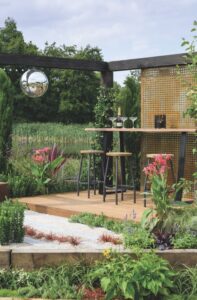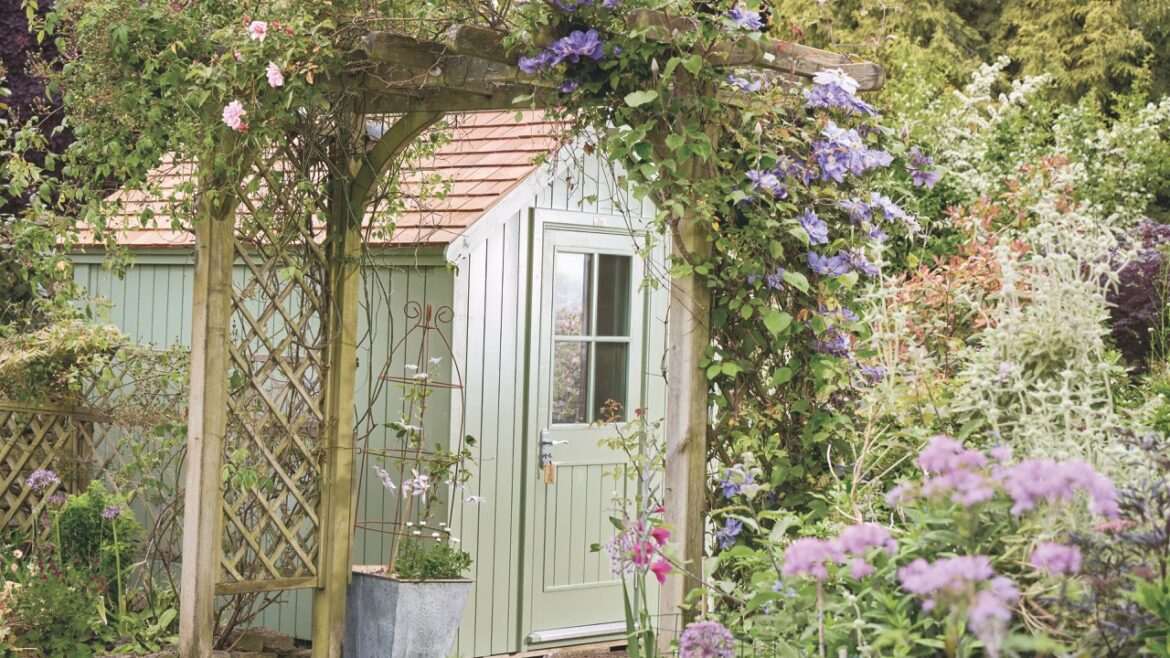As gardens everywhere burst into bloom, now’s the time to start dreaming up your next horticultural project. From design ideas to practical advice, Phoebe Harper lays the groundwork for outdoor transformation
Top image by Alexander Findlay / The Posh shed company
June is made for enjoying the garden. But what if your own private patch leaves much to be desired? Or perhaps you fancy a summer refresh?
While this glorious month might be blessed with idle afternoons for enjoying the sunshine late into the evening, it’s also a good time for action. Seize the moment to get creative and start formulating the ideas that will lay the groundwork for your next undertaking – whether it’s a full landscaping job or something smaller scale, like plotting out new beds.
“This is the perfect time to start envisaging your ideal space. In the warm weather, enjoy your garden and think about what you could change during the autumn and winter seasons,” affirms retail sales manager Leigh Barnes, from UK-based fencing specialist Jacksons Fencing.
Plan now, plant later
The best, most successful gardens require careful consideration, planning and foresight. If you’re starting from scratch or redesigning a space – regardless of whether you have acres to play with or just a small balcony – don’t underestimate the power of observation. Watch how the sun moves through your space and plan accordingly, as this will allow you to judge where best to place a new table for that perfect shady lunch spot or the ideal hammock position to catch the final rays of sunshine. It can also heavily influence decisions over which plants go where, based on their needs.

A garden by Bramley Apple Garden Design’s Sarah Plested for BBC Gardeners’ World Live at Audley End. Image by Sarah Plested / Bramley Apple Garden Design
“Practical considerations are crucial when thinking about good garden design,” shares Luke Dejahang, gardening expert and director of Crown Pavilions. “Homeowners should begin with a thorough assessment of their garden to see whether their ideas can be made into reality with what’s available. This means evaluating soil quality, drainage and sunlight exposure. This foundational step allows for more informed decisions throughout the course of the project, as well as establishing a realistic budget that covers design, materials and labour.”
To begin bringing your dream garden to life, there’s no better place to start than with a good old-fashioned pencil and paper. “Sketching out the garden’s design, including the placement of key features such as garden rooms, patios and water elements, helps to create a cohesive and functional space,” adds Luke. “Selecting the right plants is equally important, so choose species that will thrive in the garden’s specific conditions and complement the overall garden appearance and aesthetic.”
Mood boards are your best friend – gather inspiration on Pinterest or similar platforms and seek out a wealth of expert advice from sources such as the RHS website. Visit as many gardens as you can and don’t be afraid to ask questions. The National Garden Scheme gives access to 109 private gardens in Cambridgeshire alone, while National Trust properties and our beloved Cambridge University Botanic Garden are fantastic for a relaxing day out filled with planting inspiration.
Lay of the land
Depending on the size of your space and scope of your project, expert help might be required for more structural changes. This especially applies if you’re looking to install sheds, greenhouses or gazebos.

Outdoor illumination by Abbeygate Lighting. Image by SawBear / Kenn Navarro All Rights Managed
“Luxury gazebo or garden room additions can increase the appeal and functionality of gardens. They serve as a centrepiece, offering a place to retreat to and unwind in after a busy day. Furnishing the gazebo with comfortable pieces, such as a timber dining table and benches, ensures that it becomes a welcoming space to use for entertaining guests,” says Luke.
Fencing is also a key consideration – especially for those planning family- or pet-friendly spaces. “We always encourage thinking about both form and function,” continues Leigh from Jacksons Fencing. “Choosing high-quality wooden fencing not only ensures durability and longevity, but also brings natural warmth and beauty to garden designs. Fencing shouldn’t be an afterthought for those planning a redesign or starting afresh. It should be an integral part of the early planning phase, forming the backdrop to any garden renovation.”
If garden design really isn’t your bag, consider enlisting the services of a professional landscape garden designer. Cambridge itself has a bounty of talent in the field, including award-winning designer Colm Joseph and family-run business Sylvia Newman Garden Design, alongside a host of others catering to a wide variety of budgets. You’ll be relaxing in that gazebo or hammock in no time!
Plan of attack
Sarah Plested, from Hertfordshire-based Bramley Apple Garden Design, shares her key steps to garden design

English country garden-style table and chairs, featuring paints by Annie Sloan
- Assess what’s already in the garden: hardscape that can stay or be reused and plants you might want to keep.
- Think about how you’d like to use the garden, who will use it and at what times of the year?
- Consider practicalities such as storage, space to hang out the washing, accessibility and flow of movement.
- Set a budget for how much you would like to invest in your space, taking into account how long you intend to stay in the property.
- Research the garden styles and planting schemes that appeal and compare these against your budget.
- Start assessing your garden to work out where elements would be best positioned based on your garden’s aspect and the variation in sun and shade throughout the year.
- Investigate your soil type to see what kinds of plants will grow happily there, and check whether there are any legal restrictions that apply to your property, such as tree preservation orders.
- Measure your plot, recording your measurements on graph paper and noting any level changes, underground services, buildings, hardscape or plants you wish to keep.
- Get creative! Start with mapping out the fundamentals, such as patios, fences, buildings and paths, to establish the bones of your garden, before adding in the details you want.

